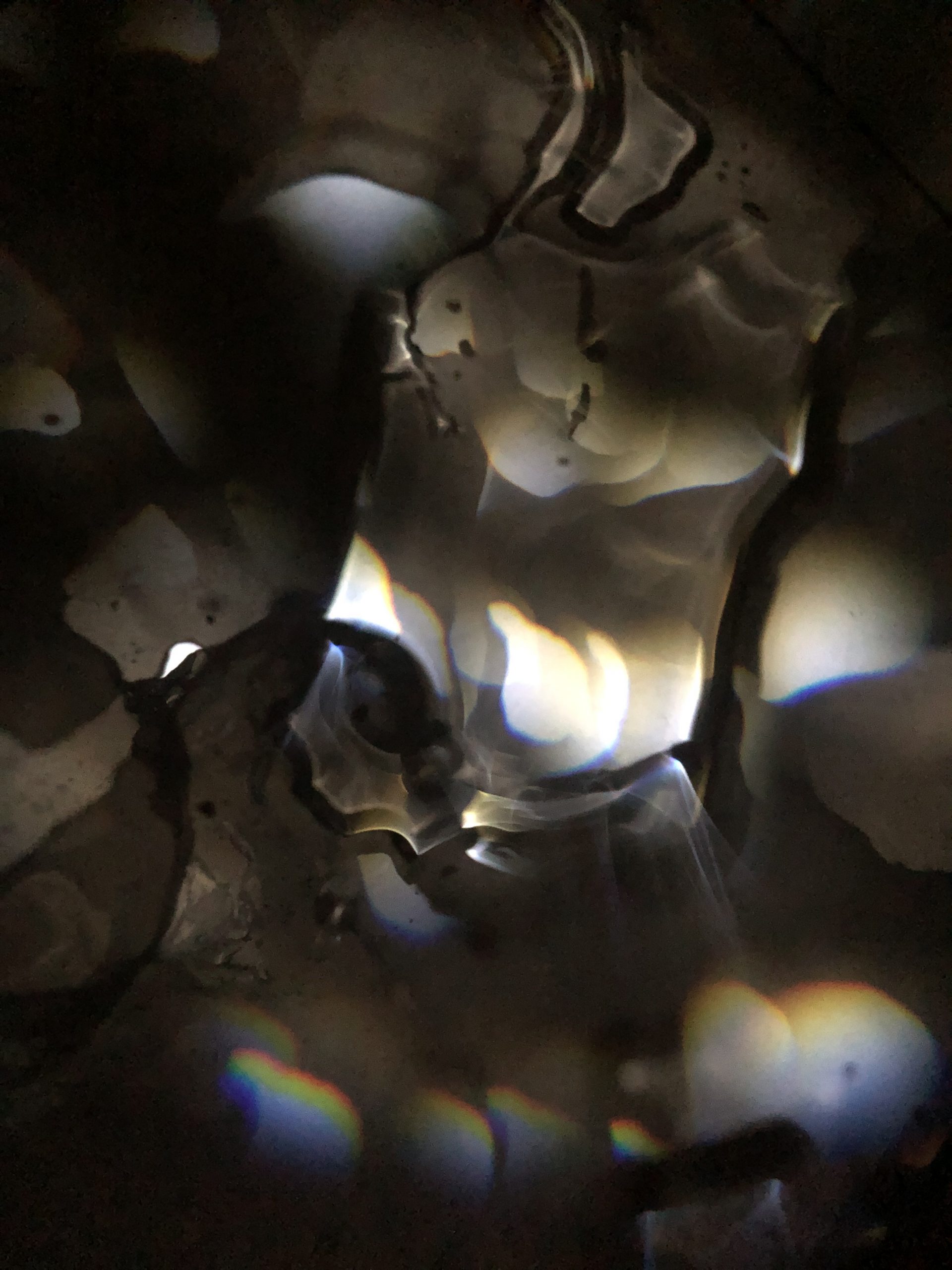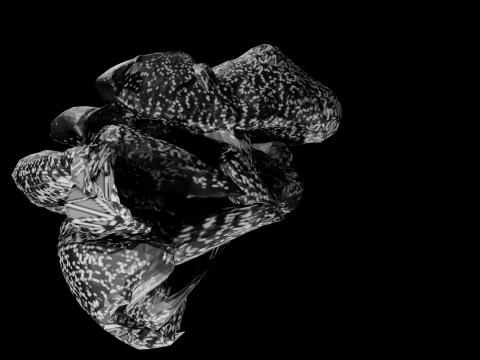Vera Molnár uses repetition to uncover, play with, and alter the rules of composition in art. She creates her work by destabilizing and then stabilizing a piece until it reaches the image in her head.
For my response to Molnár I followed her process of destabilizing and stabilizing by changing a one parameter of my piece at a time. I started with a stable image with a basic composition. My process of cycling through stabilization was not linear. I started with the first image and played around with it for awhile. From the alterations I got from experimenting I organized them into a gradual procession of change within five images. I wanted the fifth image to be more unstable and complex than the first.

A for loop nested to make a grid. The arrows are a vertex drawing.
01 Code

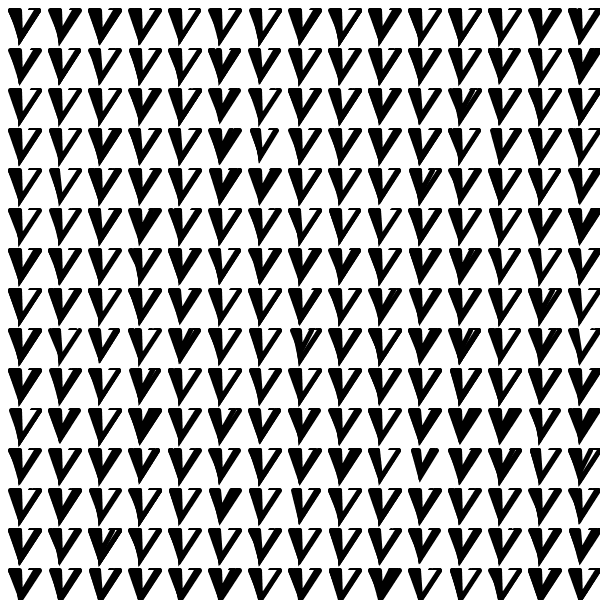
Three of the x or y values in the three point vertex drawings were looped to change with in a 8 pixel range.
02 Code
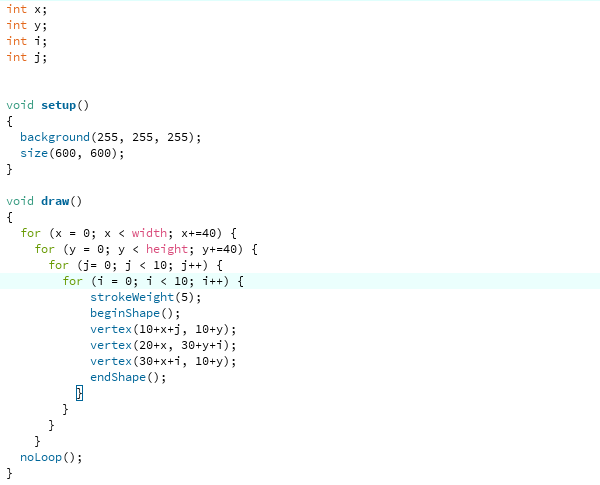
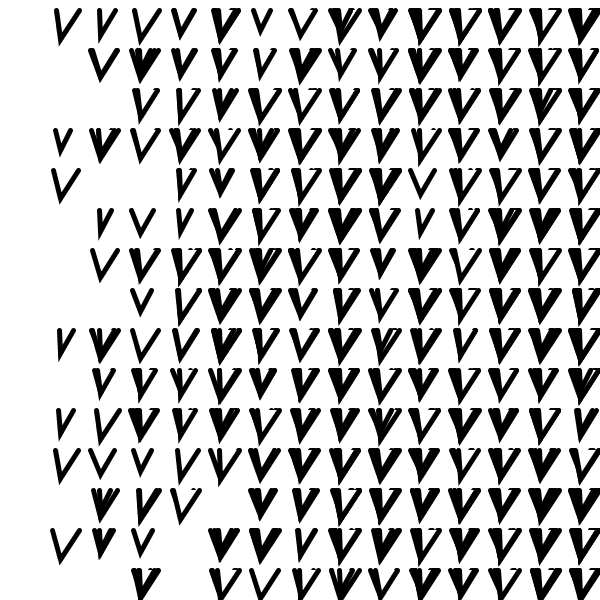
An if statement was added that allows the arrows to be drawn only if the x is greater than a random value from 0 to 1000.
03 Code


The stoke weight was randomized with a range of 3-6.
04 Code

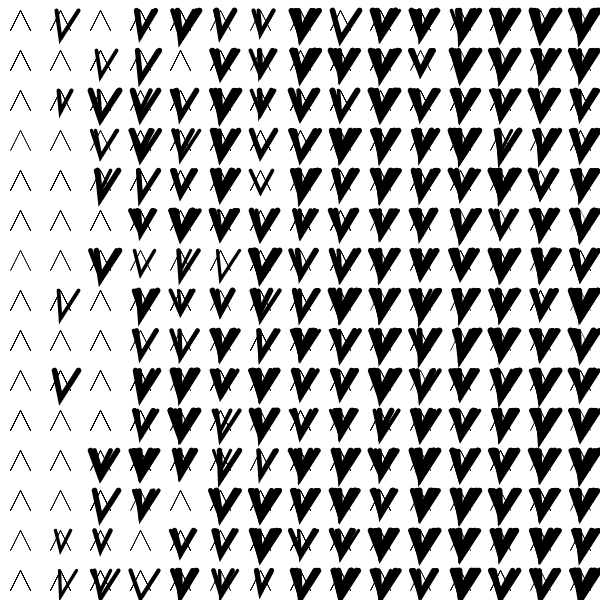
An else function was added so that if x was not greater than a random number from 0-1000 the same vertex drawing inverted would draw.
05 Code
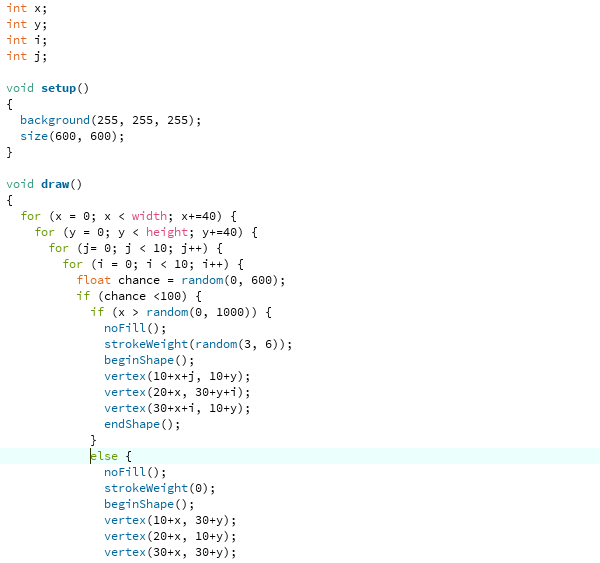

After completing the five images I decided to leave them in black and white. I wanted the shapes and how they interacted within the constraints of the 600 by 600 image and with each other to be the main focus. Limiting the variation of colors does this.
Images from one to four all are destabilizing in my eyes. Image two changes the shape of the arrows and adds variation to the shape. Image three adds randomness to the placement of the arrows. Image four furthers the variety of the arrow’s shape by randomizing the stroke weight.
I did keep the destabilization contained in images two, three, and four. Image two changes the arrows shape but the arrow is still recognizable as an arrow. The placement of arrows in image three is not completely random, some of the stable grid shape from two remains. In image four the randomness of the stroke weight is contained within a range of five.
Image five I focused on summarizing the series with a image that had a interesting composition and had a good amount of stability to it. Adding the grid of inverted arrows stabilized and made the image more visually interesting. It added layers and therefore depth to the piece. Being able to see both arrow layers across the whole image to a varying degree of clarity, depending on the area of the image looked at, provides the eye a depth filled image to explore. Having the inverted and not inverted arrows stack upon each other induces a comparison between each of the stacked arrows, and a search for a possible pattern among them.
I did not start this assignment with a image in my head to work towards. The only goal I was working toward was a image more visually complex and unstable than the first one. I liked being able to experiment and find the path I was going to follow as I went. Having a gradual procession of change in a series of images shows the experimentation and thought process of the artist. I like being able to see how a work was conceptualized in an artist’s mind and would like to see some of Molnár’s work presented this way.
A lot can be learned from repetition. I think that it helps you with creativity and helps inspire you. The simplest things that seem to be completely understood can give you the most surprises, and to me surprises are very inspiring.
